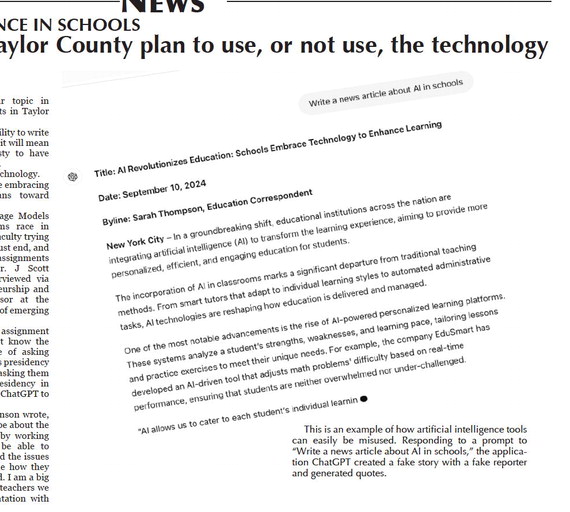ARTIFICIAL INTELLIGENCE IN SCHOOLS - How districts in Taylor County plan to use, or not use, the technology


ARTIFICIAL INTELLIGENCE IN SCHOOLS
Artificial intelligence (AI) is a popular topic in education circles, including in school districts in Ta...
